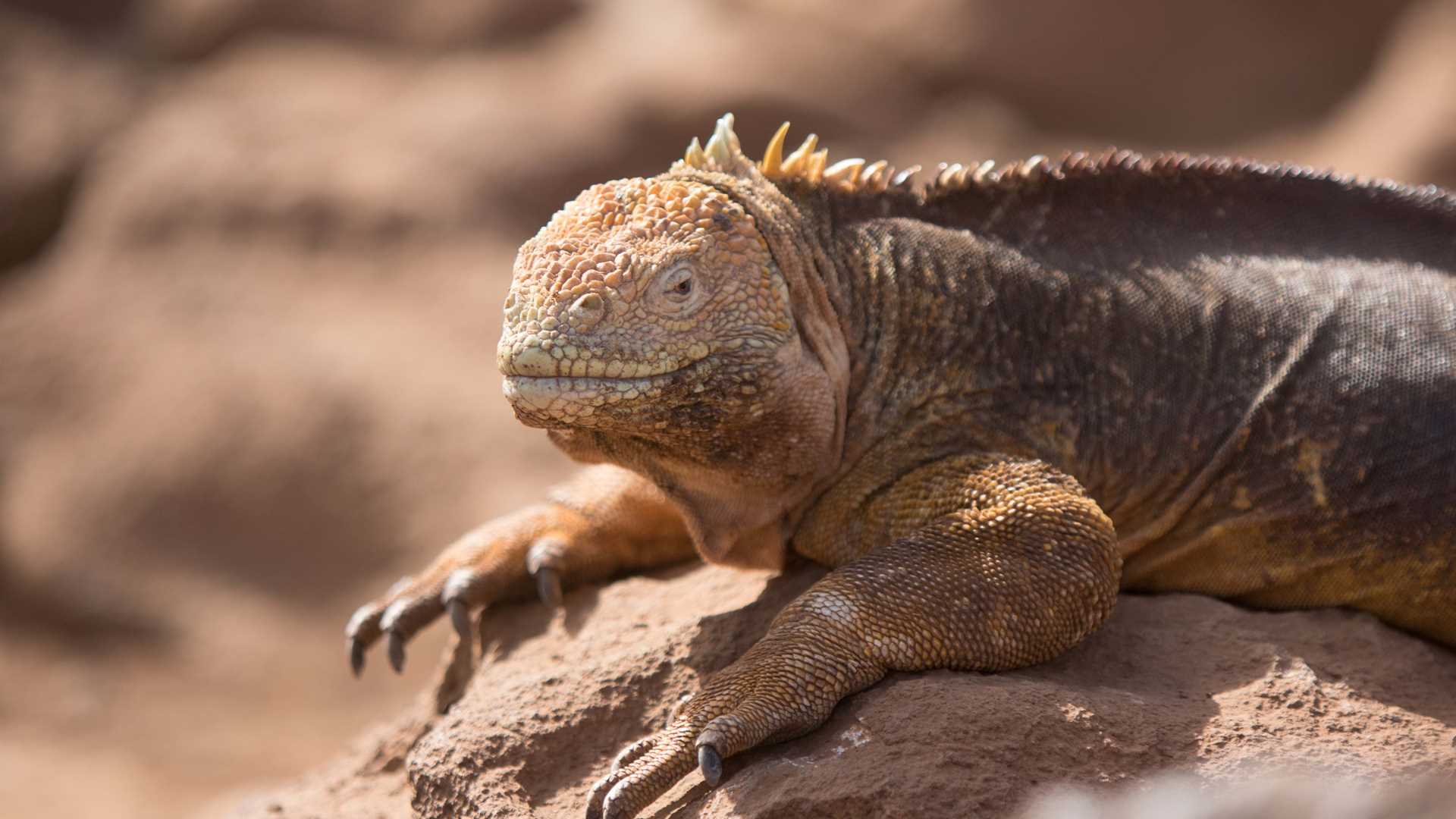A small taste of the Galapagos greeted us as we arrived yesterday, and today we begin this exploration with one of the hot spots of wildlife—the island of North Seymour. With a position almost directly in the center of the archipelago, North Seymour has a more consistent source of food throughout the year for many of the species that reside here. This is one of the few areas in the islands where we find magnificent and great frigatebirds nesting side by side, and being opportunistic breeders, they nest throughout the year. We found males with their gular sacs inflated like large red balloons and their wings extended and flapping, in an attempt to attract females. Various males will work together in a “lek” as a larger display, giving them a better chance of attracting an interested female. Galapagos land iguanas lumbered about, searching for sustenance in the peak of the dry season. Some iguanas were spotted trying to climb into the small trees to pluck leaves and the occasional flower, giving them much need moisture and energy. Blue-footed boobies were making use of a few open areas to nest and raise their chicks. One male was spotted during a courting display to a female, which entails slowly lifting his blue feet one at a time, whistling, and bringing his wings forward while pointing his beak to the sky, basically saying that he would be a suitable mate. As we returned from our hike along the coast, various sea lion pups were found resting in the shade of the vegetation, awaiting their mothers return so they could nurse. As we lifted the anchor and began our navigation, we reflected on the incredibly diverse group of species that can be found on such a small island.
The afternoon brought us to Rabida Island, a blood red isle colored by iron oxide. The water was temperate and enticing, and we started the afternoon with snorkeling from the beach and along the coast. Impressive fauna was all around, as we encountered white-tipped reef sharks patrolling the shallow reef and large schools of razor surgeon fish cruising by. We spotted pacific green sea turtles grazing on algae in the shallows, with hieroglyphic hawk fish closely watching nearby. A large common octopus was chased away by small damselfish, as the octopus appeared to be disrupting their algae gardens. Large milkfish quickly moved by as we spotted a diamond stingray resting on the bottom. This was an eye opening experience for many, as the marine life here is as unique to this region as the terrestrial creatures. The sun dipped behind the horizon over Isabela Island as we walked upon a red sand beach with resting sea lions, thus signaling the end of our first day of exploration in Galapagos.









